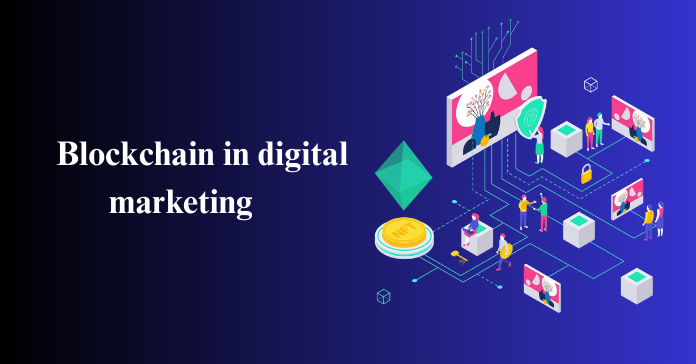Table of Contents
The Rise of Blockchain in Digital Marketing – Benefits, Use Cases, and Challenges
In the last decade, blockchain technology has evolved from being the backbone of cryptocurrencies like Bitcoin into a transformative innovation with applications across industries. While finance and supply chain management were among the earliest adopters, digital marketing is now becoming one of the most promising areas where blockchain can bring massive disruption.
According to MarketsandMarkets, the global blockchain market size in marketing and advertising is expected to grow from USD 0.35 billion in 2022 to USD 4.4 billion by 2027, at a CAGR of 53.6%. This exponential growth is not surprising, given how the digital marketing ecosystem has long struggled with issues like lack of transparency, data privacy concerns, ad fraud, and inefficient targeting.
In this comprehensive blog, we’ll explore the rise of blockchain in digital marketing, including its benefits, real-world use cases, and key challenges that marketers need to understand before adopting this game-changing technology.
What is Blockchain?
At its core, blockchain is a distributed ledger technology (DLT) that records transactions across a decentralized network. Unlike traditional centralized systems, where data is stored on a single server, blockchain distributes information across multiple nodes, making it tamper-proof, transparent, and secure.
Each transaction on the blockchain is recorded in a block, linked to the previous block, and verified by consensus mechanisms. This creates an immutable chain of records that cannot be altered retroactively.
When applied to digital marketing, blockchain provides verifiable transparency between advertisers, publishers, and consumers. This eliminates intermediaries, prevents fraudulent activity, and ensures that marketing budgets are spent more effectively.
Why Blockchain is Entering Digital Marketing
Digital marketing today faces several critical challenges:
- Ad Fraud – According to Juniper Research, advertisers lost over $81 billion globally to ad fraud in 2022, and this number is expected to rise to $100 billion by 2023.
- Data Privacy Concerns – With scandals like Cambridge Analytica, consumers are increasingly wary about how their data is collected, stored, and used.
- Lack of Transparency – Advertisers often have little visibility into how their ads are delivered, viewed, or interacted with across platforms.
- Dependency on Intermediaries – Brands must rely heavily on third parties (Google, Meta, ad networks) that control pricing, placement, and performance metrics.
Blockchain has the potential to address all of these issues by offering trustless, transparent, and secure systems that empower both brands and consumers.
Benefits of Blockchain in Digital Marketing
1. Enhanced Transparency and Trust
Blockchain ensures that all advertising transactions are recorded in a public ledger. This means advertisers can verify where their money is going, how many impressions were generated, and whether the ads were shown to real humans or bots.
For example, blockchain-powered ad networks like AdEx eliminate middlemen and provide full visibility into campaign performance.
2. Reduction of Ad Fraud
With blockchain’s immutable records, every impression, click, and conversion can be validated. Fraudulent activities such as click farms or fake impressions can be significantly reduced.
According to Statista, digital ad fraud is expected to cost businesses $120 billion by 2023. Blockchain could cut this number drastically.
3. Improved Data Privacy
Blockchain allows consumers to control their own data and grant access only to trusted advertisers. This aligns with global regulations like GDPR and CCPA, which demand stricter consumer data protection.
Platforms like Datum are already enabling users to monetize and share their data directly with businesses in exchange for rewards.
4. Direct-to-Consumer Engagement
Instead of relying on tech giants for audience targeting, blockchain enables brands to connect directly with consumers who voluntarily share their data. This creates personalized, consent-driven marketing.
For example, Brave Browser uses blockchain to pay users in BAT tokens when they opt-in to view ads.
5. Smart Contracts for Automation
Smart contracts are self-executing programs stored on the blockchain that run when certain conditions are met. In marketing, smart contracts can automatically execute payments once verified actions (like ad views or conversions) occur—removing disputes and delays.
Real-World Use Cases of Blockchain in Digital Marketing
1. Ad Verification and Transparency
Blockchain enables advertisers to track whether their ads are displayed on legitimate websites and viewed by real humans.
For instance, MadHive uses blockchain to fight OTT (over-the-top) ad fraud, ensuring ad impressions are real.
2. Consumer Data Ownership
Projects like OCEAN Protocol are pioneering decentralized data exchanges where users sell their anonymized data to marketers, giving them ownership and profit participation.
3. Loyalty Programs and Rewards
Blockchain simplifies loyalty programs by storing points on an immutable ledger that customers can redeem across multiple platforms.
American Express has experimented with blockchain-based loyalty solutions that allow partners to issue rewards instantly.
4. Supply Chain Transparency in Marketing
From verifying organic products to tracing the origin of luxury goods, blockchain ensures authenticity, which can be a powerful marketing tool.
For example, Walmart uses blockchain to trace food supply chains, enhancing consumer trust.
5. Influencer Marketing Verification
Blockchain can validate influencer audiences, engagement, and reach, ensuring brands only collaborate with authentic creators rather than fake accounts.
Platforms like UBEX are exploring blockchain-powered influencer validation systems.
Challenges of Using Blockchain in Digital Marketing
While blockchain offers incredible benefits, adoption is not without hurdles:
1. Scalability Issues
Most blockchains struggle to handle large transaction volumes. For digital marketing, where millions of impressions happen every second, this is a critical challenge.
2. Energy Consumption
Proof-of-Work blockchains like Bitcoin consume enormous amounts of energy. While newer consensus mechanisms like Proof-of-Stake are more sustainable, the environmental impact remains a concern.
3. Lack of Standardization
There is no universal framework for how blockchain should be applied in marketing, making adoption fragmented.
4. High Initial Costs
Developing blockchain-powered solutions requires specialized knowledge and infrastructure, which can be expensive for small to mid-sized businesses.
5. Regulatory Uncertainty
Governments worldwide are still defining their stance on blockchain and cryptocurrencies. Marketers must navigate evolving legal landscapes when implementing blockchain-based solutions.
Future of Blockchain in Digital Marketing
The future of blockchain in marketing looks promising as adoption increases across industries. Some key trends include:
- Tokenized Engagement Models – Users will earn tokens for engaging with content, ads, and surveys.
- Decentralized Ad Exchanges – Eliminating intermediaries to reduce costs and fraud.
- AI + Blockchain Integration – Combining machine learning with blockchain to deliver hyper-personalized yet secure campaigns.
- NFT Marketing – Brands using NFTs for loyalty, exclusivity, and engagement.
- According to a PwC report, blockchain could boost global GDP by $1.76 trillion by 2030, with marketing being one of the key sectors driving this growth.
Conclusion
Blockchain is not just a buzzword—it’s a revolutionary force set to redefine the future of digital marketing. By providing transparency, security, fraud prevention, and consumer empowerment, blockchain offers solutions to long-standing challenges faced by advertisers and brands.
While hurdles like scalability, regulation, and costs remain, the momentum behind blockchain adoption is undeniable. Forward-thinking marketers who embrace blockchain today will be well-positioned to thrive in the next era of digital marketing.


